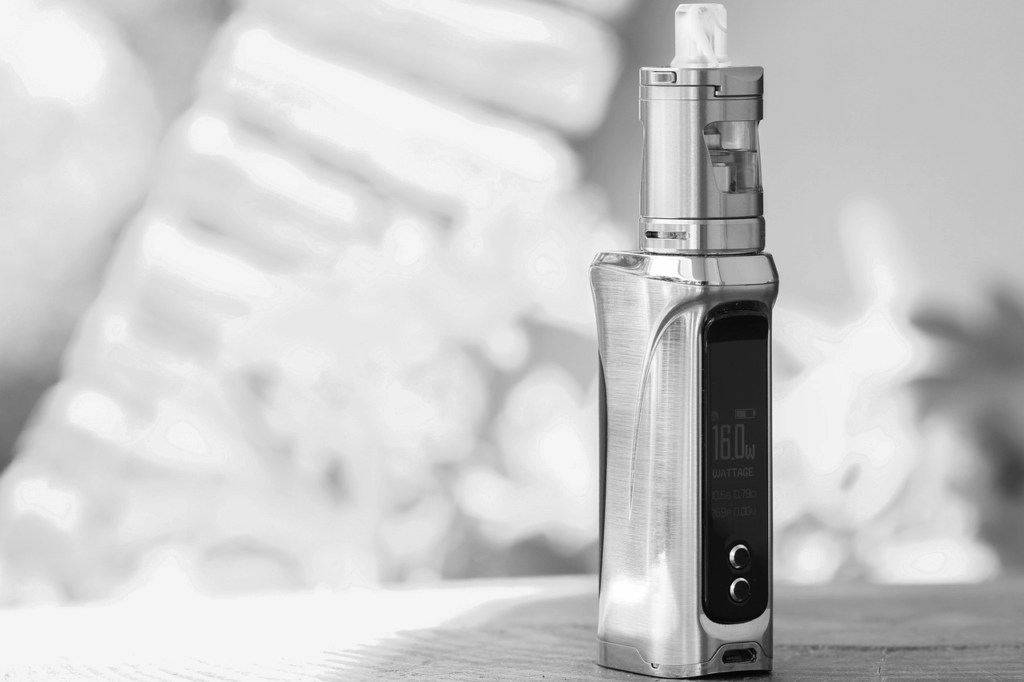Popcorn with butter and vaping. The recurring theme? a legacy of harmful chemicals that could permanently damage young people’s lungs.
Although the moniker popcorn lung may sound odd, the ailment it refers to is anything but. Physicians are witnessing an increase in respiratory issues as young people are drawn to vape pens with vibrant colours and sweet flavours.
Experts are now raising the alarm, stating that a chemical threat that avoids the body’s defences and goes directly to the lungs is hidden beneath the clouds of cotton candy vapour and mango mist.

The Hidden Danger Behind the Vapor
After three years of covert vaping, a teen in the US made headlines when he developed popcorn lung, a rare lung ailment. Officially known as bronchiolitis obliterans, the illness is severe, irreversible, and incurable.
It makes breathing difficult and frequently results in symptoms like persistent coughing and shortness of breath by causing inflammation and scarring in the lungs’ smaller airways.
When factory workers who made microwave popcorn started getting sick in the early 2000s after being exposed to a chemical called diacetyl, the term “popcorn lung” was born.
Originally used to give food a buttery taste, diacetyl was later shown to cause serious lung damage in people who were exposed to it over time. Since then, certain vape liquids have been discovered to contain the same ingredient.
When diacetyl is heated and breathed, it turns poisonous. Airflow becomes more constrained as a result of the inflammation and scarring of the bronchioles, the lungs’ smallest airways.
In the US and other countries, diacetyl is still permitted in e-cigarette products, even though it is prohibited in the EU and the UK. The risk is significantly higher for illegal vape goods, which frequently circumvent safety restrictions.
It’s concerning that diacetyl isn’t the only issue. Acetaldehyde, formaldehyde, ammonia, sulphur dioxide, chlorine, hydrochloric acid, and even vapours from metal oxides are among the other dangerous substances that have been connected to popcorn lung.
These compounds have been shown to be present in e-cigarette vapour, and regular inhalation of them may have the same harmful effects.
Alternative flavourings like acetoin and 2,3-pentanedione may pose comparable risks even in vape juices without diacetyl. Experts claim that more than 180 distinct flavouring chemicals are utilised in e-cigarette products.
Many of them decompose into new compounds when heated, some of which have never been investigated for inhalation safety. Every time a person vapes, this produces a dangerous and unpredictable mixture.
Other causes of popcorn lung include inflammatory diseases like rheumatoid arthritis, problems in organ transplant recipients, and infections such respiratory syncytial virus and some types of pneumonia or bronchitis.
The harm to lung tissue and airway constriction are consistent across all of these situations. But symptoms don’t always show up immediately.
A person with popcorn lung may feel OK in the beginning, but eventually develop symptoms like wheezing, extreme fatigue, a persistent cough, or dyspnoea during physical exertion.
In certain cases, patients may get rashes, fevers, night sweats, or cough up mucous. Popcorn lung has no recognised treatment. Treatments that reduce symptoms and limit the course of the disease are the only alternatives available once the lungs have been injured.
Therefore, the only effective measure of protection is to avoid exposure to dangerous chemicals in the first place. However, that type of prevention is not as simple as it may seem for a lot of teenagers and young adults who are drawn in by the promise of flavoured vape devices.
Slick Flavors, Serious Risks – How the Vaping Industry Hooks Young Users
The overwhelming number of flavoured products available on the market has contributed to the rise in popularity of vaping among teens and young adults.
These selections, which range from cotton candy and bubblegum to mango ice and cherry cola, are meant to be alluring, and they do. Vapes and e-cigarettes were the most popular tobacco products among young people in the US in 2024.
Many people are unaware, though, that these fragrant clouds are carrying more than simply flavour. The way vaping attracts to and ultimately traps the younger generation is the fundamental issue that lies underneath the marketing.
According to data from 2024, more than one in three high school students in the United States who used tobacco products said they used more than one kind, including cigarettes, cigars, and vapes. The same applied to students in middle school.
Dual usage is a pattern that raises the hazards of exposure to chemicals and nicotine. Additionally, it implies that vaping is joining regular tobacco rather than replacing it.
The flavours are generally the first thing that draw people in. Many of the chemicals used to produce these flavours are safe to consume, but that doesn’t mean they’re healthy to breathe in.
The way chemicals enter the body has a significant impact on how the body processes them. Chemicals that are ingested as food travel through the digestive tract and are filtered by the liver before entering the bloodstream.
This procedure restricts the amount of damage they can inflict. On the other hand, these drugs circumvent the body’s natural defences when inhaled, as occurs with vaping. In just a few seconds, they transfer substances to critical organs like the heart and brain by entering the lungs and then the bloodstream.
The original popcorn lung instances were so terrible because of this disparity. Popcorn with a butter flavour was safe to eat. However, diacetyl, a flavouring ingredient, caused irreparable lung damage when inhaled.
Vape liquids, many of which include a similar variety of substances, are now subject to the same concept. These worries are being strengthened by new studies.
Even after controlling for whether they also smoke traditional tobacco, teens who vape report higher respiratory difficulties, according to a big international study.
Increased symptoms were associated with certain factors, such as the frequency of vaping, the flavours used, and whether or not they utilise nicotine salts.
The data clearly shows that young users are more likely to suffer from adverse health effects the more exposure they receive. History is repeating itself in many ways.
Similar to how workers in popcorn factories had to modify occupational safety measures due to exposure to harmful chemicals, the increasing amount of research on vaping is urging new regulations, this time to save the lungs of future generations.
Life After Diagnosis – Preventing and Managing Popcorn Lung
Despite their apparent differences, popcorn and vaping have one deadly thing in common: substances that are inhaled that are never intended to enter the lungs. The way these compounds react when heated and breathed is what makes them dangerous, not the fact that they are used in food.
They can inflict damage that lasts a lifetime, and the change from safe to toxic occurs rapidly. It could be possible to prevent recurrence by learning from the past. Workplace safety rules were improved as a result of the tragic deaths of industrial workers who were exposed to diacetyl.
Now, vaping is subject to the same lessons. Future harm, particularly among young users, could be minimised with improved ingredient testing, more transparent labelling, more control, and public education.
However, prevention is the responsibility of individuals and families until a larger-scale change occurs. We are reminded by stories like the American youngster who was diagnosed with popcorn lung that even something as seemingly innocuous as a flavoured vape can have major, permanent effects.
Early diagnosis is crucial for people with popcorn lung. Although the condition may not always be curable, symptoms can be lessened and its course slowed with early therapy. Preventing more exposure is the first and most crucial measure. That entails giving up smoking and vaping.
The severity of the illness determines the treatment plan. Physicians may recommend inhalers with drugs like albuterol to help with breathing or corticosteroids like prednisone to lessen inflammation.
Oxygen therapy may be necessary for certain patients. A lung transplant may be considered in severe situations where the lung damage is severe and potentially fatal, but this is only a last resort.
Protecting your lungs is the first step in lowering your risk of popcorn lung. Steer clear of tobacco, e-cigarettes, and vapes. Avoid secondhand smoke and spend as little time as possible in polluted areas. Infection prevention is also essential.
Wash your hands frequently, stay away from ill people, and heed your doctor’s vaccination advice. Wearing personal protection equipment is mandatory for people in jobs that expose workers to chemicals.
If a diagnosis has been made, long-term care include avoiding smoke and pollution, treating infections right away, and controlling associated illnesses like acid reflux.
Your quality of life can significantly improve if you take your prescription drugs as directed and consult your doctor as needed. It’s also difficult to live with a chronic condition, but you don’t have to do it alone.
For both persons with the illness and their loved ones, support groups can provide a feeling of belonging and a common experience. Making a connection with people who are similar to you can provide understanding, support, and much-needed respite.
Now Trending:
- “Popcorn Lung” In 17-Year-Old Sparks New Health Alert Over A Popular Habit
- Three Years After My Husband’s Death, I Fell In Love Again. One Day, My Daughter Said, “Mommy, My New Dad Asked Me To Keep A Secret From You”
- Doctor-Approved Finger Test Warns Of Significant Health Issues
Please SHARE this article with Family and Friends and let us know in the comments!



